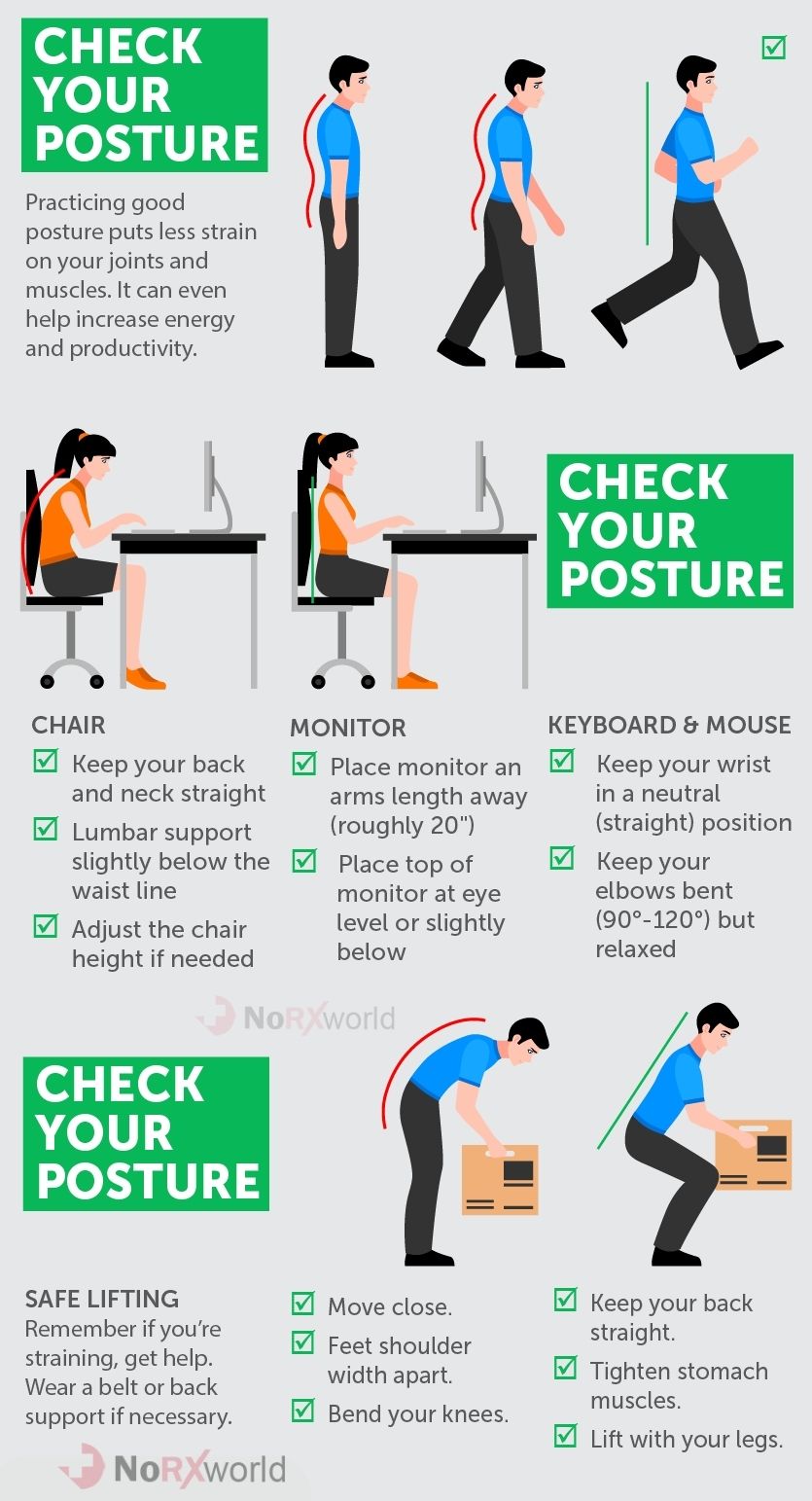
Welcome to today’s blog, where we will explore simple and effective ways to prevent lower back pain and maintain a strong spine.
Whether you spend long hours sitting at a desk, lifting heavy objects, or just want to take better care of your back, this guide is for you.
In this blog post, we will explore tips and techniques anyone can incorporate into their daily routine.
From gentle exercises to muscle strengthening and posture maintenance, we will cover many strategies to help you prevent lower back pain and promote a strong spine.
So, let’s embark on this journey together and discover the secrets to a pain-free back and a healthier, stronger spine.
Get ready to take charge of your well-being and say goodbye to lower back pain once and for all!
Introduction: Understanding Lower Back Pain
Lower back pain is a familiar condition that affects millions of people worldwide. It refers to discomfort or pain in the area between the ribcage and the hips, known as the lumbar spine. This region of the back is crucial for supporting the upper body and facilitating movement.
Causes of Lower Back Pain
- Poor posture: Prolonged sitting in a crouching position can debilitate muscles and ligaments in your lower back, leading to pain.
- Muscle or ligament strain: Overexertion, lifting heavy objects incorrectly, or sudden movements can cause strains in the muscles or ligaments of the lower back.
- Herniated or bulging discs: The discs that cushion the vertebrae in the spine can be harmed or displaced, putting pressure on nearby nerves and causing pain.
- Injury or trauma: Accidents, falls, or sports-related injuries can damage the structures in the lower back, causing pain.
- Sedentary lifestyle: Lack of regular physical activity weakens the muscles that support the lower back, making it more susceptible to pain.
- Obesity: Excess weight stresses the spine, increasing the risk of lower back pain.

Maintaining Proper Posture
Sit up straight
When sitting, keep your back straight and supported by the chair. Avoid slouching or leaning forward. Use a cushion or rolled-up towel to support the actual curve of your lower back if needed.
Adjust your workspace
Ensure that your workstation is ergonomically designed. Position your computer screen at eye level, and place your keyboard and mouse within comfortable reach. Use a chair with good lumbar support and keep your feet flat on the floor or on a footrest.
Stand tall
When standing, scatter your weight evenly on both feet. Keep your shoulders back and relaxed, and avoid arching your back or pushing your hips forward. If standing for long periods, consider using a supportive mat or taking regular breaks to sit down.
Lift with care
When lifting weighted objects, bend your knees and use your leg muscles to raise them instead of straining your back. Hold the thing close to your body and avoid twisting while lifting or carrying it.
Strengthening Core Muscles
Strong core muscles are essential for stability, balance, and body strength. The core muscles in your lower belly, back, and pelvis provide a solid foundation for movements and support your spine. Here are some simple exercises to help improve your core muscles.
Plank
Start by getting into a push-up position, but instead of resting on your hands, lower yourself onto your forearms. Keep your body in a straight line from your head to your heels. Hold this position for as long as possible, aiming for at least 30 seconds. Repeat for multiple sets.
Bicycle Crunches
Assume a prone position with your knees bent and your hands supporting your head. Raise your upper body off the ground and bring your left elbow towards the right side knee while straightening your left leg. Alternate sides and repeat this cycling motion for 10–15 repetitions on each side.
Russian Twists
Assume a seated position on the floor with your knees bent and your feet flat on the ground. Lean back slightly and interlock your fingers together. Raise your clasped hands together in front of your chest. While keeping your hips stationary, twist your torso to the right and left sides. Your aim should be to complete 10–15 twists on each side.
Bridge
Let’s start by lying on your back with your knees bent and your feet flat on the ground. Now, lift your hips up unless your body makes a straight line from your knees to your shoulders. Tighten your glutes and hold this position for a few seconds before slowly lowering your hips. Repeat this exercise 10–15 times for a great workout!
Regular Exercise and Stretching
Benefits of Regular Exercise
- Strengthens muscles: Exercise helps build strength in your back and core muscles, supporting your spine and reducing pain.
- Improves flexibility: Stretching exercises increase the flexibility of your muscles and joints, allowing for a better range of motion and less discomfort.
- Enhances blood flow: Physical activity gets your blood pumping, delivering much-needed nutrients and oxygen to your lower back, promoting healing, and reducing inflammation.
Stretching Exercises for Lower Back Pain:
Knee-to-Chest Stretch
- Lie on your back with your knees angled.
- Slowly bring one knee up towards the chest, using your hands to pull it gently.
- Hold for 20–30 seconds and repeat on the other side.
- This stretch helps ease tension in the lower back and stretches the glutes and hips.
Cat-Camel Stretch
- Get down on all fours, with your hands under your shoulders and your knees underneath your hips.
- Arch your back upwards, like a cat stretching, and hold for a few seconds.
- Then, lower your back towards the ground, like a camel, and hold for a few seconds.
- Repeat this movement 10–15 times.
- The cat-camel stretch helps improve flexibility and mobility in the spine.
Child’s Pose
- Assuming a hands-and-knee position, you can then gently lower your hips onto your heels. Stretch your arms ahead and bring your forehead towards the floor.
- Retain this position for 30 seconds to 1 minute, breathing deeply.
- The child’s pose gently stretches the lower back and promotes relaxation.
Pelvic Tilts
- Lie on your back with your knees folded and your feet flat on the ground.
- Tense your abdominal muscles and push your lower back against the floor.
- Hold for 5 seconds, then release.
- Repeat 10-15 times.
- Pelvic tilts help strengthen the abdominal muscles and stabilize the lower back.
Ergonomics and Back Support
Ergonomic Tips for Lower Back Pain:
- Sit with proper posture: Keep your feet flat on the floor, your knees folded at a 90-degree angle, and your back supported against the chair.
- Use an adjustable chair: Use a chair with adjustable height and lumbar support to secure proper spine alignment.
- Take breaks: Stand up, stretch, and walk around every 30 minutes to avoid prolonged sitting, which can strain your back.
Back Support for Lower Back Pain:
Lumbar roll
- Place a small cushion or rolled-up cloth behind your lower back while sitting.
- The lumbar roll supports the natural curve of your spine and helps maintain proper posture.
Seat cushion
- Use a seat cushion with ergonomic features, such as memory foam or gel, to provide additional support and relieve pressure on your lower back.
- The cushion should distribute your weight evenly and promote proper spinal alignment.
Back brace
- Use a back brace for extra support during activities that may strain your lower back, such as heavy lifting or prolonged standing.
- A back brace can help stabilize your spine and reduce pain caused by excessive strain.
Ergonomic accessories
- Invest in a keyboard and mouse that are ergonomically designed to lessen strain on your wrists and upper back.
- Use a monitor riser to bring your computer screen to eye level, preventing neck strain.
Lifestyle Changes for a Healthy Spine
Some easy lifestyle changes can make a big difference in taking care of your spine. You can promote a strong and pain-free back by incorporating healthy routines into your daily routine.
Stay Active
- Engage in regular exercise that focuses on strengthening your core, such as yoga, Pilates, or swimming.
- Physical activity helps support your spine, improves flexibility, and reduces the risk of back pain.
Maintain Good Posture
- Be mindful of your posture throughout the day, whether sitting, standing, or walking.
- Keep your shoulders relaxed, your back straight, and your head aligned with your spine. Avoid slouching or hunching forward.
Lift with Care
- Remember to use your legs, not your back, when lifting heavy objects. Fold your knees, keep your back straight, and lift using the strength of your legs.
- Avoid twisting or jerking motions while lifting, as they can strain your back muscles.
Watch Your Weight
- Sustaining a healthy weight reduces the strain on your spine. Excess weight can put pressure on your back and increase the risk of developing back pain.
- Make healthy food choices, exercise regularly, and strive for a balanced lifestyle to achieve and maintain a healthy weight.
Quit Smoking
- Smoking hampers blood flow to the spinal discs, reducing their ability to absorb nutrients and causing them to degenerate faster.
- Quitting smoking benefits your overall health and promotes a healthier spine
Invest in Ergonomics
- Make your workspace ergonomically friendly by using an adjustable chair, positioning your computer screen at eye level, and employing a keyboard and mouse that support your wrists.
- Ergonomic adjustments can reduce strain on your spine and promote better posture.
FAQs
Q.1: How can I make my lower spine stronger?
Ans.: Try exercises that aim at your core muscles, such as planks, bridges, and pelvic tilts, to strengthen your lower spine.
Q.2: What can you do to keep a strong back?
Ans.: To maintain a strong back, exercise regularly to strengthen your core muscles, practice good posture, and avoid heavy lifting with improper form.
Q.3: What foods make your spine stronger?
Ans.: To strengthen your spine, incorporate foods rich in calcium, vitamin D, and omega-3 fatty acids into your diet, such as milk, leafy greens, fatty fish, and nuts.
Q.4: What drinks help with back pain?
Ans.: There are no specific drinks to alleviate back pain directly. Living hydrated by drinking plenty of water can help maintain overall health, including the health of your back.

Leave a Reply